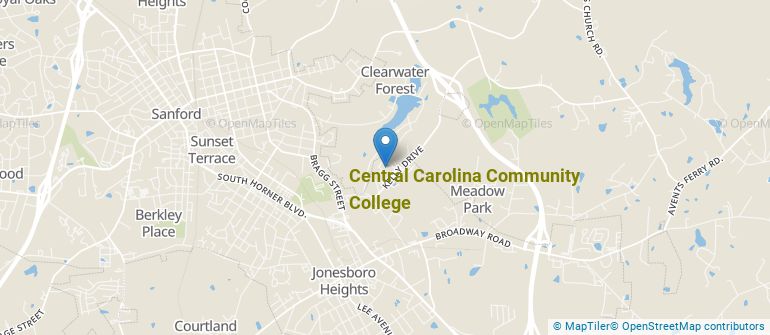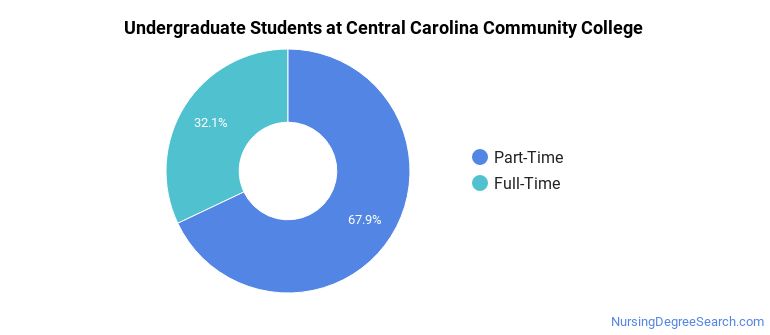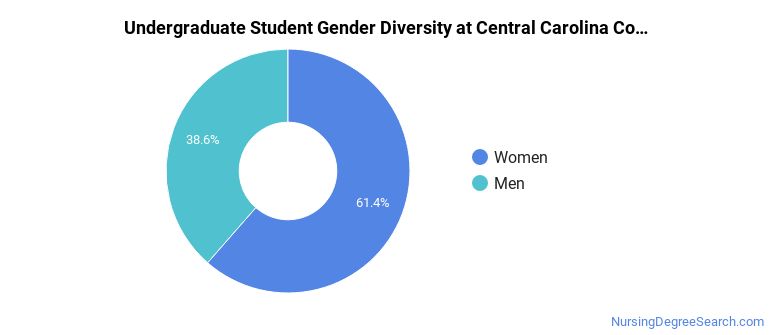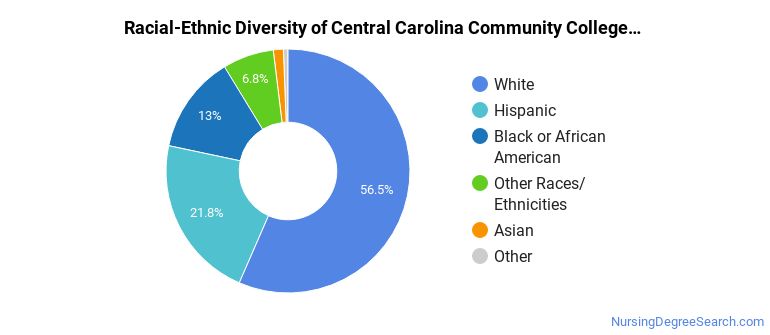Central Carolina Community College Nursing Programs
Central Carolina Community College is a public institution situated in Sanford, North Carolina. Sanford is a great place for students who enjoy small town life.
Where Is Central Carolina Community College?

Contact details for Central Carolina Community College are given below.
| Contact Details | |
|---|---|
| Address: | 1105 Kelly Dr, Sanford, NC 27330-9840 |
| Phone: | 919-775-5401 |
| Website: | www.cccc.edu |
How Do I Get Into Central Carolina Community College?
You can apply to Central Carolina Community College online at: www.cccc.edu/admissions/apply/
Can I Afford Central Carolina Community College?
Student Loan Debt
It's not uncommon for college students to take out loans to pay for school. In fact, almost 66% of students nationwide depend at least partially on loans. At Central Carolina Community College, approximately 1% of students took out student loans averaging $5,190 a year. That adds up to $20,760 over four years for those students.
Central Carolina Community College Undergraduate Student Diversity

Gender Diversity
Of the 1,652 full-time undergraduates at Central Carolina Community College, 39% are male and 61% are female.

Racial-Ethnic Diversity
The racial-ethnic breakdown of Central Carolina Community College students is as follows.

| Race/Ethnicity | Number of Grads |
|---|---|
| Asian | 22 |
| Black or African American | 214 |
| Hispanic or Latino | 360 |
| White | 934 |
| International Students | 10 |
| Other Races/Ethnicities | 112 |
Central Carolina Community College Nursing Concentrations
The table below shows the number of awards for each concentration.
| Major | Associate’s | Undergraduate Certificate | TOTAL |
|---|---|---|---|
| Registered Nursing | 26 | 0 | 26 |
| Licensed Practical/Vocational Nurse Training | 0 | 24 | 24 |
| Nursing Assistant/Aide and Patient Care Assistant/Aide | 0 | 0 | 0 |
| TOTAL | 26 | 24 | 50 |
References
*The racial-ethnic minorities count is calculated by taking the total number of students and subtracting white students, international students, and students whose race/ethnicity was unknown. This number is then divided by the total number of students at the school to obtain the racial-ethnic minorities percentage.
More about our data sources and methodologies.
